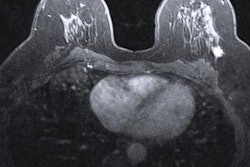Dear AuntMinnie Member,
Digital breast tomosynthesis (DBT) has been touted as a technology that could revolutionize breast imaging since the first systems hit the market 10 years ago. But just how good is DBT, really?
That question was asked in a presentation by Dr. Debra Monticciolo this week at the Society of Breast Imaging/American College of Radiology (SBI/ACR) Breast Imaging Symposium in Savannah, GA. Monticciolo reviewed the clinical studies on DBT's performance, generally concluding that while DBT is better, it might not be the revolutionary advance that breast imagers were hoping for.
While you're in our Women's Imaging Community, check out more coverage from SBI/ACR 2022, including these stories:
- Read how switching from computer-aided detection (CAD) software to artificial intelligence (AI)-based analysis of DBT images resulted in better performance.
- Learn what imaging facilities can do to create a more inclusive and diverse workplace.
- Get strategies for reducing burnout among physicians by redesigning work processes, not physicians.
- See how screening women in their 40s resulted in lower rates of advanced breast disease and mortality from breast cancer in a study from Canada.
- Find out how the COVID-19 pandemic posed challenges to breast imagers.
Racial bias and AI
Last year, a preprint paper was published that highlighted disturbing potential ramifications in the use of AI for medical imaging. A team led by Dr. Judy Gichoya of Emory University found that deep-learning models could be used to determine the racial identity of patients.
The paper has now been published in a peer-reviewed journal, and the conclusions are largely the same. The perplexing thing is that the researchers themselves aren't sure how AI models are able to predict racial identity -- raising further questions about the "black box" nature of the technology.
While you're in our Artificial Intelligence Community, check out this story on the performance of AI for triaging breast MRI exams -- a practice that could make screening breast MRI more efficient.
Contrast shortage sends ripples
Finally, the shortage of one of the most commonly used contrast agents for CT and x-ray studies -- Omnipaque from GE Healthcare -- continues to send ripples throughout radiology. This week, a group led by researchers from the University of Wisconsin published a guide to help imaging facilities manage their scarce supplies.
Visit our CT Community as we continue to follow this important story, as well as other news such as research on higher cancer mortality rates for Black people living in rural areas and follow-up delays that occur after CT lung cancer screening.


















